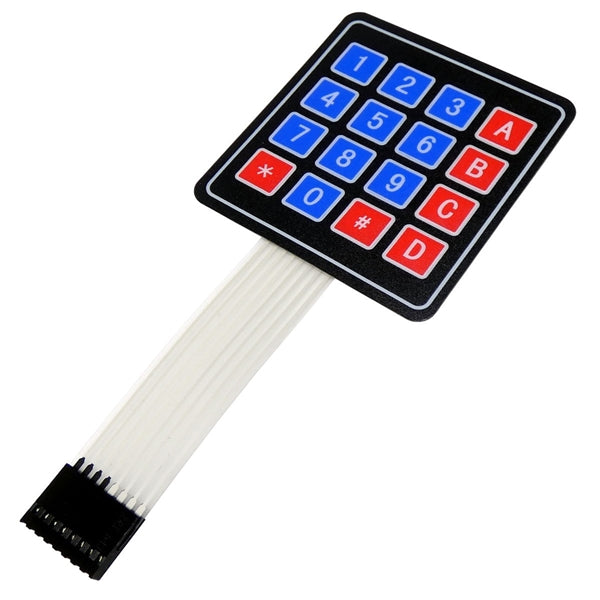Innovative Membrane Switch Solutions for Customized Control Panels
Innovative Membrane Switch Solutions for Customized Control Panels
Blog Article
Understanding Membrane Layer Switches Over: The Trick to Long Lasting and Reliable Controls

What Are Membrane Layer Buttons?
Membrane layer buttons are an innovative service in the realm of individual interface innovation, combining performance and design effortlessly. These gadgets work as an interface between individuals and electronic systems, incorporating a number of parts into a small layout. Normally constructed from versatile, slim layers of materials, membrane switches are created to react to touch, making it possible for individuals to connect with equipment and digital gadgets efficiently.
The main elements of a membrane button include a published circuit layer, graphic overlay, and a spacer layer that stops unplanned activation. The graphic overlay can be customized to show brand identity or customer choices, enhancing visual appeals while guaranteeing functionality. Membrane layer buttons are typically made use of in numerous applications, including clinical gadgets, consumer electronics, and industrial equipment, owing to their durability and resistance to environmental elements such as moisture and dirt.
Among the crucial advantages of membrane layer buttons is their capacity to endure wear and tear, making them ideal for high-traffic settings. Furthermore, they are lightweight and call for marginal space, permitting for cutting-edge layouts in product development. In general, membrane layer switches stand for a reliable and practical option for modern electronic interfaces, marrying modern technology with user-centric layout principles.
How Membrane Layer Switches Over Work
The operation of membrane layer switches hinges on a straightforward yet reliable system that equates customer input right into digital signals. When a user presses the switch, the leading layer flaws, enabling a conductive aspect in the circuit layer to make call with an equivalent conductive pad on the underside of the graphic overlay.
The layout of membrane switches can differ, however they frequently incorporate domes or responsive aspects to supply comments to the customer, improving the general experience - membrane switch. The products made use of in membrane layer switches, such as polyester or polycarbonate, add to their resilience and resistance to environmental elements, including dampness and dust. The published circuits are generally encapsulated, which safeguards them from wear and tear over time.
Benefits of Membrane Buttons

Furthermore, membrane buttons are recognized for their resilience. Constructed from durable products, they are immune to dirt, dampness, and physical wear, which substantially expands their life expectancy compared to typical mechanical switches. This toughness makes them specifically appropriate for high-traffic atmospheres and applications calling for long life.
An additional significant benefit is the ease of cleansing and maintenance. The smooth surface area of membrane layer switches over reduces dirt build-up and is often invulnerable to spills, making them optimal for settings that call for regular sanitization.
Furthermore, membrane layer buttons use a structured profile, causing a thinner style that can be incorporated into different gadgets without adding mass. This feature not just improves the aesthetic charm however likewise adds to an extra ergonomic product design.
Applications of Membrane Buttons
User-friendly and functional, membrane layer switches find applications across a large range of markets, consisting of medical tools, customer electronic devices, and industrial tools. In the clinical area, these buttons are essential to devices such as analysis equipment, client monitoring systems, and infusion pumps, where integrity and convenience of cleansing are crucial. Their capacity to keep and endure severe settings performance makes them ideal for such applications.

In consumer electronics, membrane buttons are used in products like microwaves, cleaning equipments, and remotes - membrane switch. Their streamlined style permits for user-friendly interface, enhancing the overall customer experience while offering sturdiness and resistance to tear and use
Industrial devices additionally takes advantage of membrane buttons, particularly in control panels for machinery and automation systems. These switches supply security against dirt and wetness, ensuring regular efficiency in tough environments. Their customizable attributes enable producers to customize them to particular operational needs, improving performance and performance.
Selecting the Right Membrane Layer Switch Over
When choosing a membrane layer switch, it is important to take into consideration different elements that affect efficiency and suitability for certain applications. The primary considerations include environmental conditions, responsive comments, toughness, and design specifications.
First, evaluate the operating setting; useful site switches exposed to dampness, chemicals, or severe temperatures need specific materials to ensure durability and capability. Next off, review the requirement for responsive responses. Depending upon individual interaction, some applications may gain from a responsive feedback to confirm activation, while others may prefer a non-tactile design for visual factors.
Sturdiness is one more you can try these out crucial aspect; membrane buttons must be designed to endure constant usage, effects, and abrasion. Guarantee the selected button can sustain the expected lifecycle, specifically in high-usage scenarios.

Final Thought
In verdict, membrane layer changes serve as necessary elements in the style of durable and reliable control systems across different sectors. The versatility of membrane layer switches over enables for tailored services that meet specific functional needs, reinforcing their relevance in modern technology.
Membrane switches over stand for an essential element of modern interface layout, mixing performance with durability in numerous applications.Membrane buttons are a sophisticated solution in the realm of individual interface technology, combining capability and style flawlessly. Normally built from versatile, slim layers of products, membrane buttons are designed to respond to touch, enabling individuals to engage with equipment and electronic devices properly.
The design of membrane layer switches can vary, yet they typically include domes or responsive components to offer comments to the user, enhancing the total experience.In moved here conclusion, membrane layer switches over serve as vital elements in the design of sturdy and trustworthy control systems throughout numerous markets.
Report this page